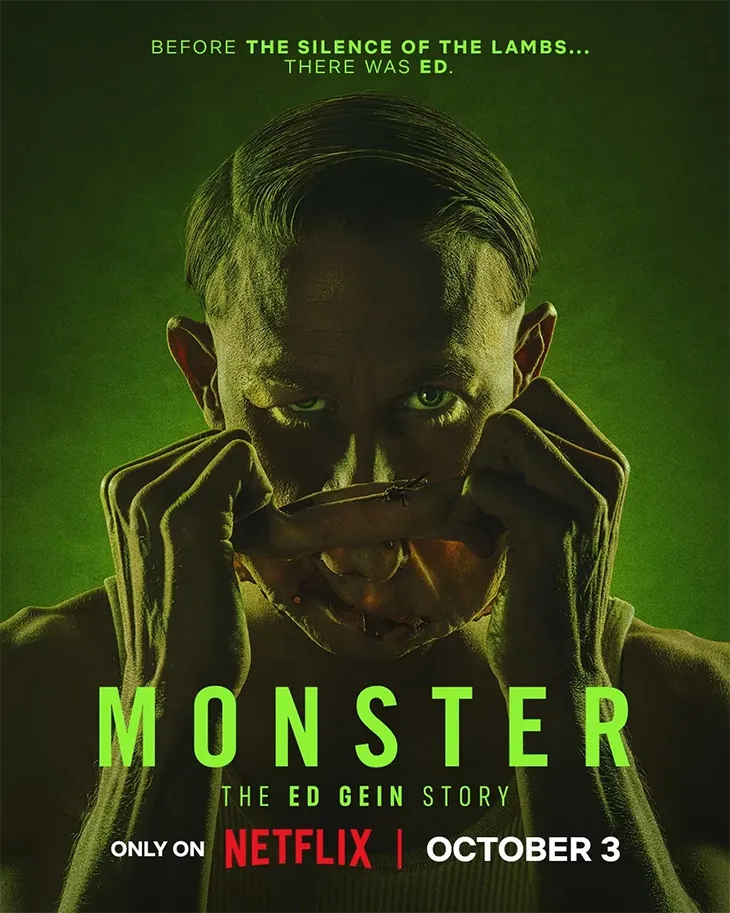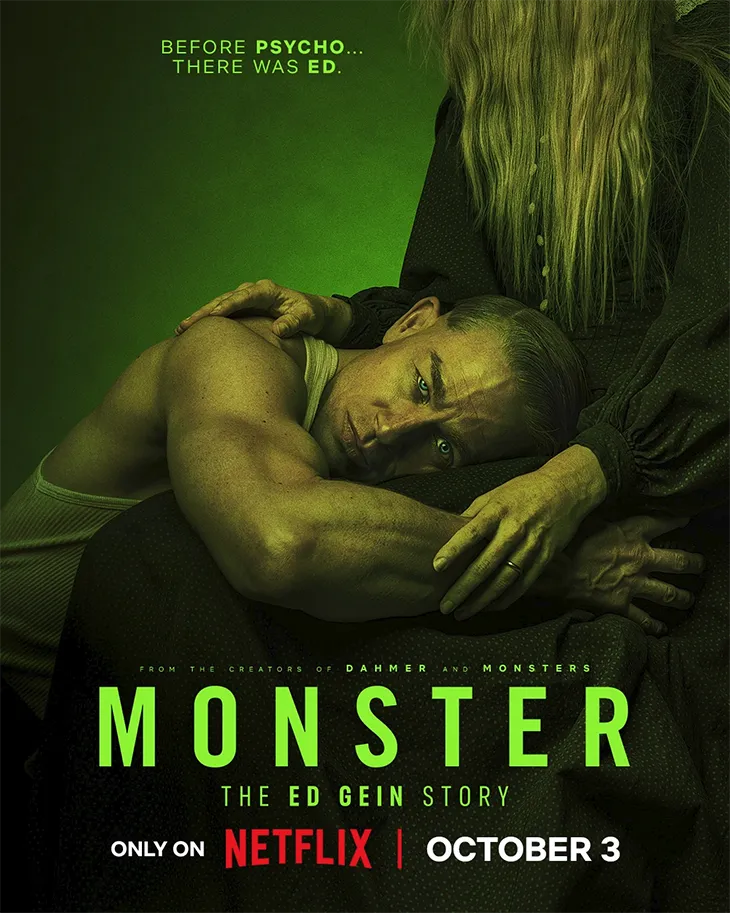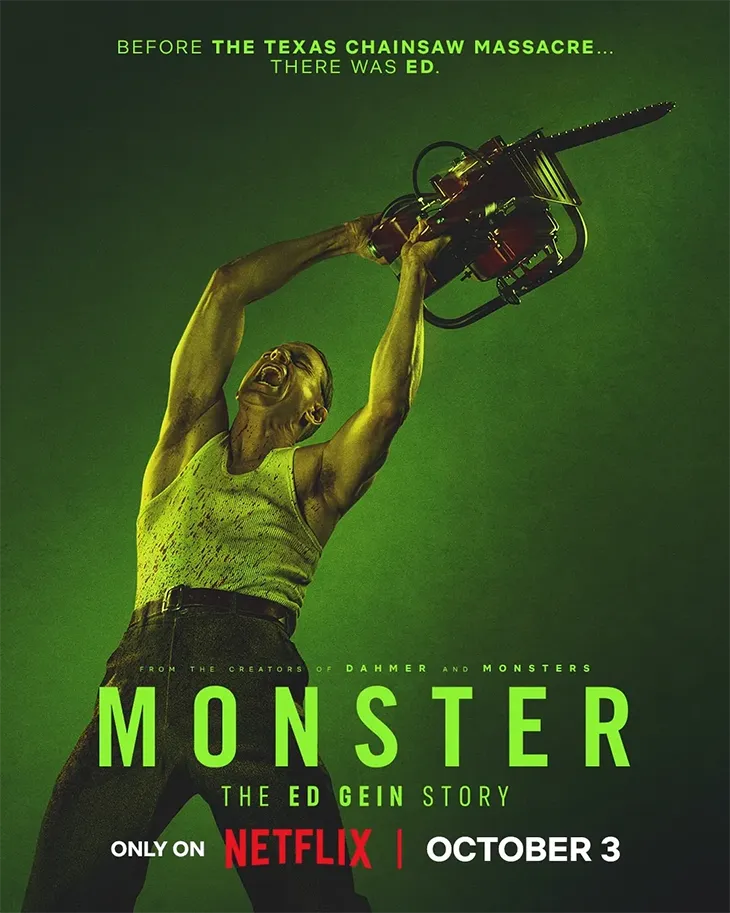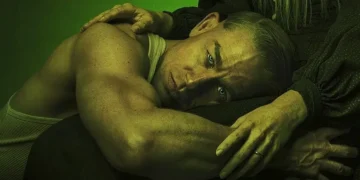
Netflix prepares to release the next chapter of Ryan Murphy and Ian Brennan’s true-crime anthology with Monster: The Ed Gein Story. Following the success of seasons centered on Jeffrey Dahmer and the Menendez brothers, the creators now turn their lens to one of the most disturbing figures in American crime history. Ed Gein’s violent acts in 1950s Wisconsin shocked his community, and later influenced Hollywood’s most infamous horror films.
Gein lived as a quiet recluse in Plainfield, Wisconsin. Neighbors saw him as odd but harmless. In truth, he hid a farmhouse filled with horrors. His grave robbing and murders went far beyond crime into ritualistic desecration, creating a legacy that haunted both law enforcement and popular imagination. His obsession with his mother, Augusta Gein, shaped his twisted psychology and drove many of his acts. This dynamic plays a central role in the series, with Laurie Metcalf portraying Augusta opposite Charlie Hunnam’s Ed.
While Gein himself remains a lesser-known name compared to Dahmer or Bundy, his influence on film and literature is enormous. Alfred Hitchcock drew from Gein when crafting Psycho and its unsettling figure Norman Bates. Tobe Hooper used Gein’s crimes as the foundation for The Texas Chain Saw Massacre. Jonathan Demme’s The Silence of the Lambs pulled similar threads for Buffalo Bill. The new season acknowledges this cultural impact directly, including Hitchcock into the narrative. Tom Hollander appears as Hitchcock, narrating portions of the teaser and guiding audiences into the chilling story.

The series also explores how Gein’s legacy shaped not just fiction, but real killers who followed. Murphy has spoken about how Gein influenced Ted Bundy and others who came later. Co-creator Ian Brennan frames the challenge of the season: Gein is obscure to many viewers, yet his actions echo widely through modern crime and horror. By connecting Gein’s crimes with the art they inspired, Monster: The Ed Gein Story broadens the scope beyond Wisconsin’s frozen fields into Hollywood’s creative corridors.
The show’s teaser underscores this approach. Hollander’s Hitchcock asks questions that frame the investigation: “What shocks you most about him? What was his childhood like?” His voice accompanies imagery of Gein’s farmhouse, police searches, and evidence that reveals the disturbing depths of his crimes. This narrative device situates Gein both as a historical figure and as a haunting presence that continues to ask questions of culture.
Murphy and Brennan structure the series around a familiar thesis they have carried through previous seasons: are monsters born, or are they made? Gein’s case presents both possibilities. His isolation, his fractured family life, and his psychological collapse form one narrative. The brutality of his acts creates another. The season portrays Gein through both his family history and his crimes, tracing how one fed into the other.

The cast adds further weight to this retelling. Alongside Hunnam and Metcalf, the ensemble includes Suzanna Son, Vicky Krieps, Olivia Williams, Joey Pollari, Tyler Jacob Moore, Charlie Hall, Will Brill, Mimi Kennedy, Robin Weigert, and Lesley Manville. Each actor portrays figures who surrounded Gein, from family members to community members, law enforcement, and cultural figures who later reimagined his crimes in film.
Brennan, who wrote every episode of the new season, has expressed confidence that this installment will surpass the earlier two. He describes it as the most powerful and unsettling chapter yet. Murphy echoes that view, positioning Gein as one of the most influential criminals of the twentieth century, even if his name is less familiar. Together, they suggest that this season will challenge audiences in ways previous installments only hinted at.
At its core, Monster: The Ed Gein Story is less about recounting a series of crimes than about tracing how those crimes ripple through decades of culture. It connects a lonely farmhouse in Wisconsin to some of the defining works of horror in cinema. It examines how media, myth, and reality overlap when society confronts its darkest figures. And it raises uncomfortable questions about why these figures continue to fascinate audiences.
When the series premieres on October 3, it will close a circle that began with Dahmer. Each season has peeled back layers of crime, culture, and influence. With Ed Gein, Murphy and Brennan reveal the roots of horror itself, asking viewers to confront the origins of nightmares that never truly fade.



















